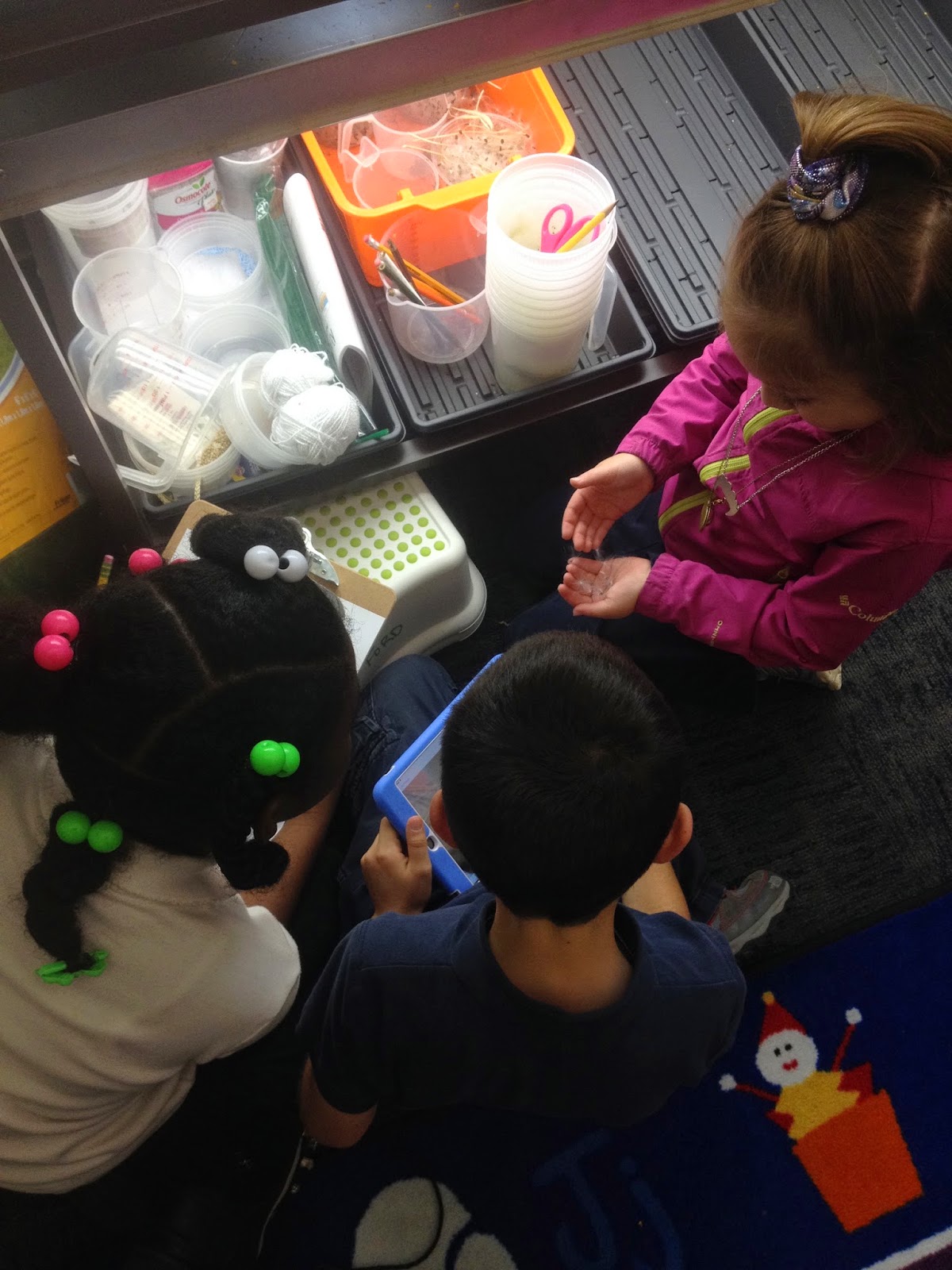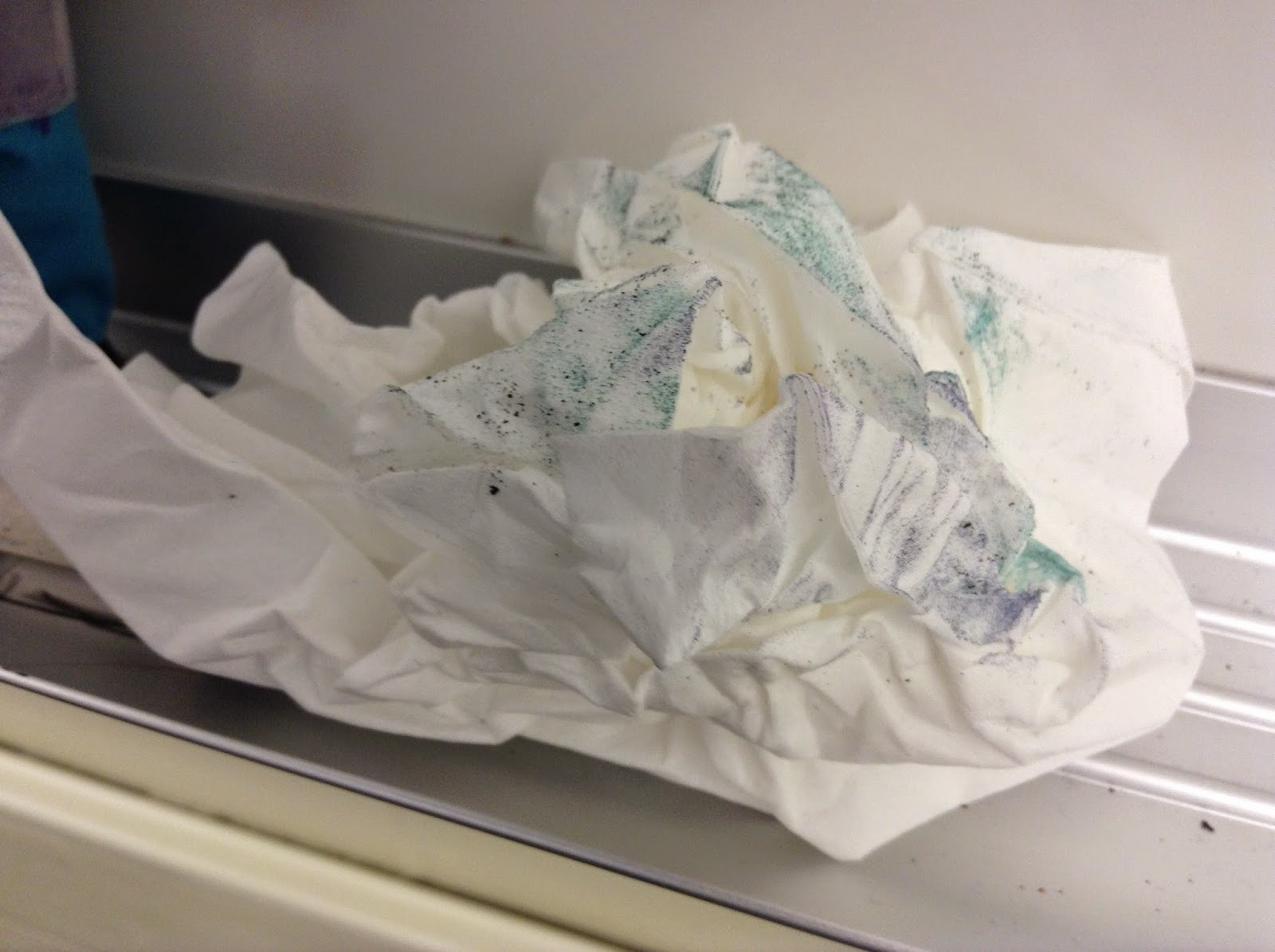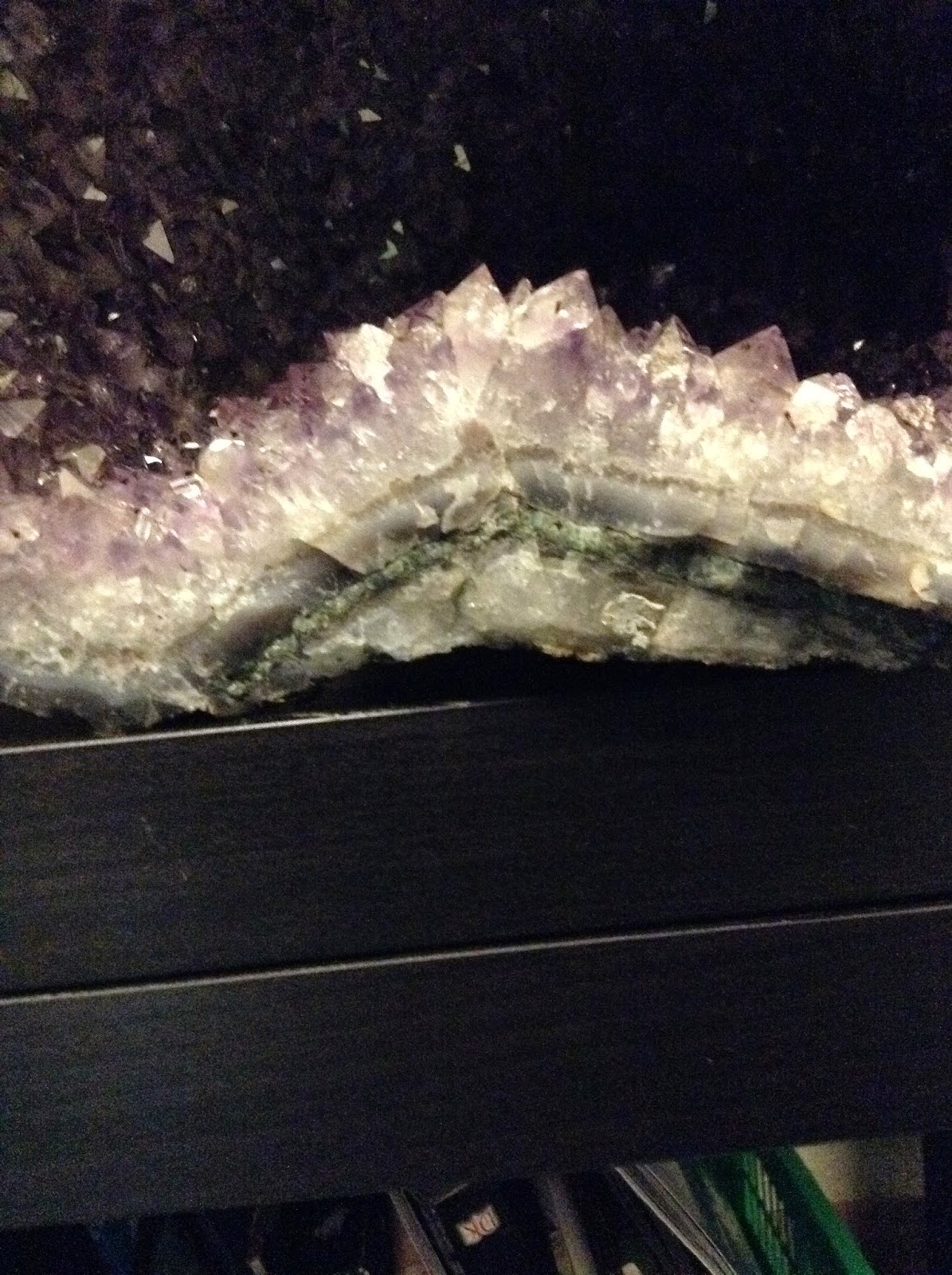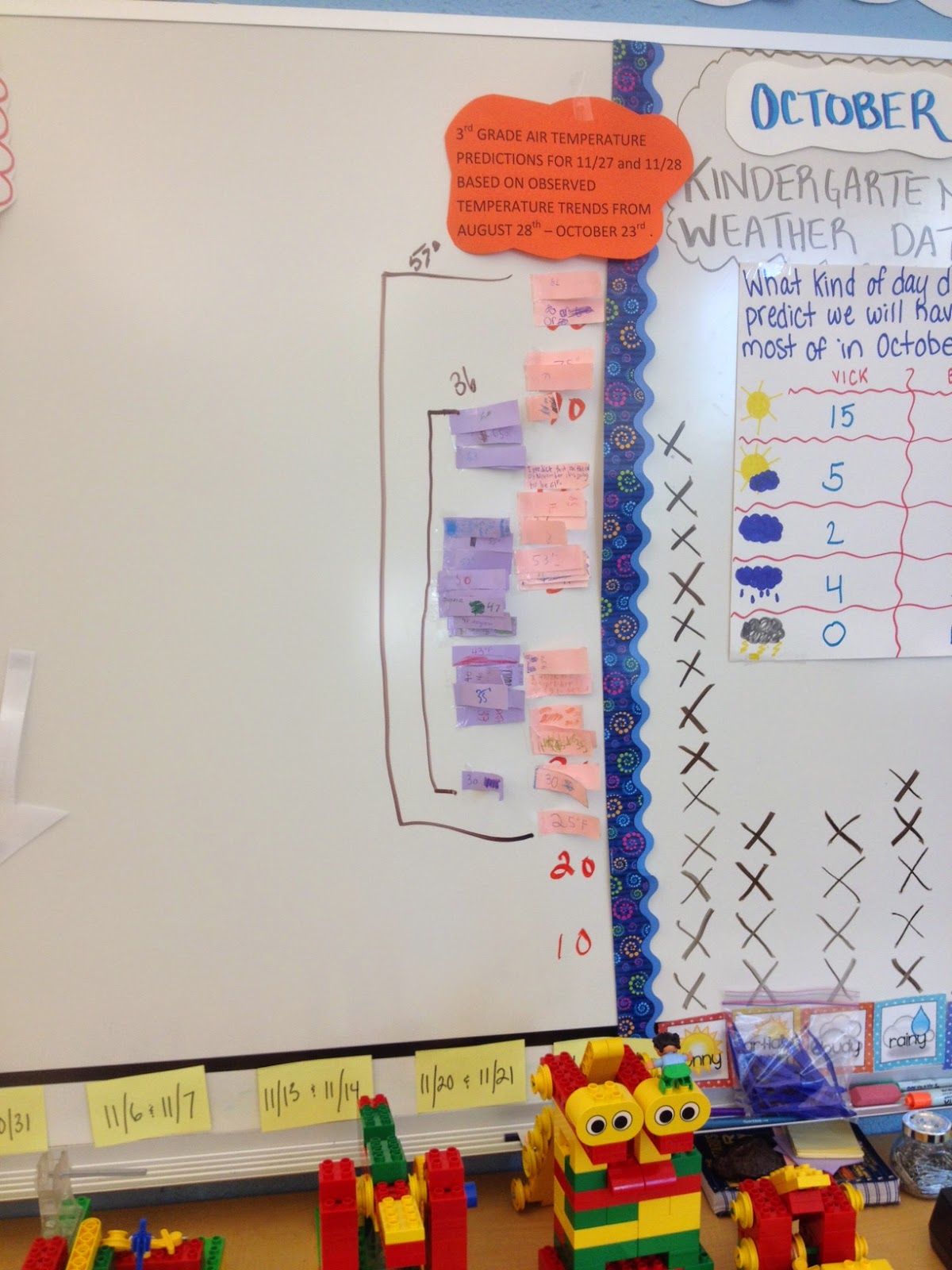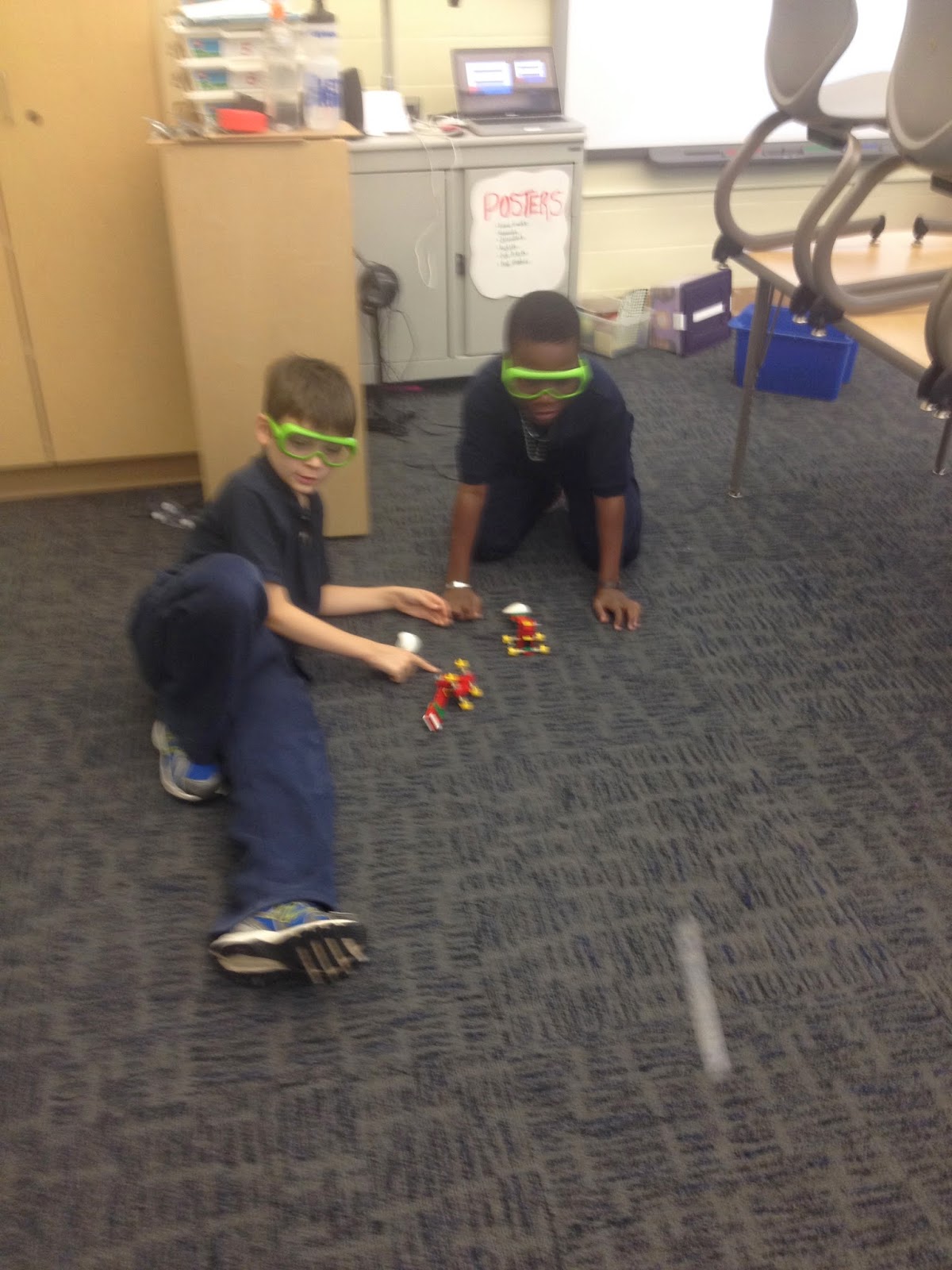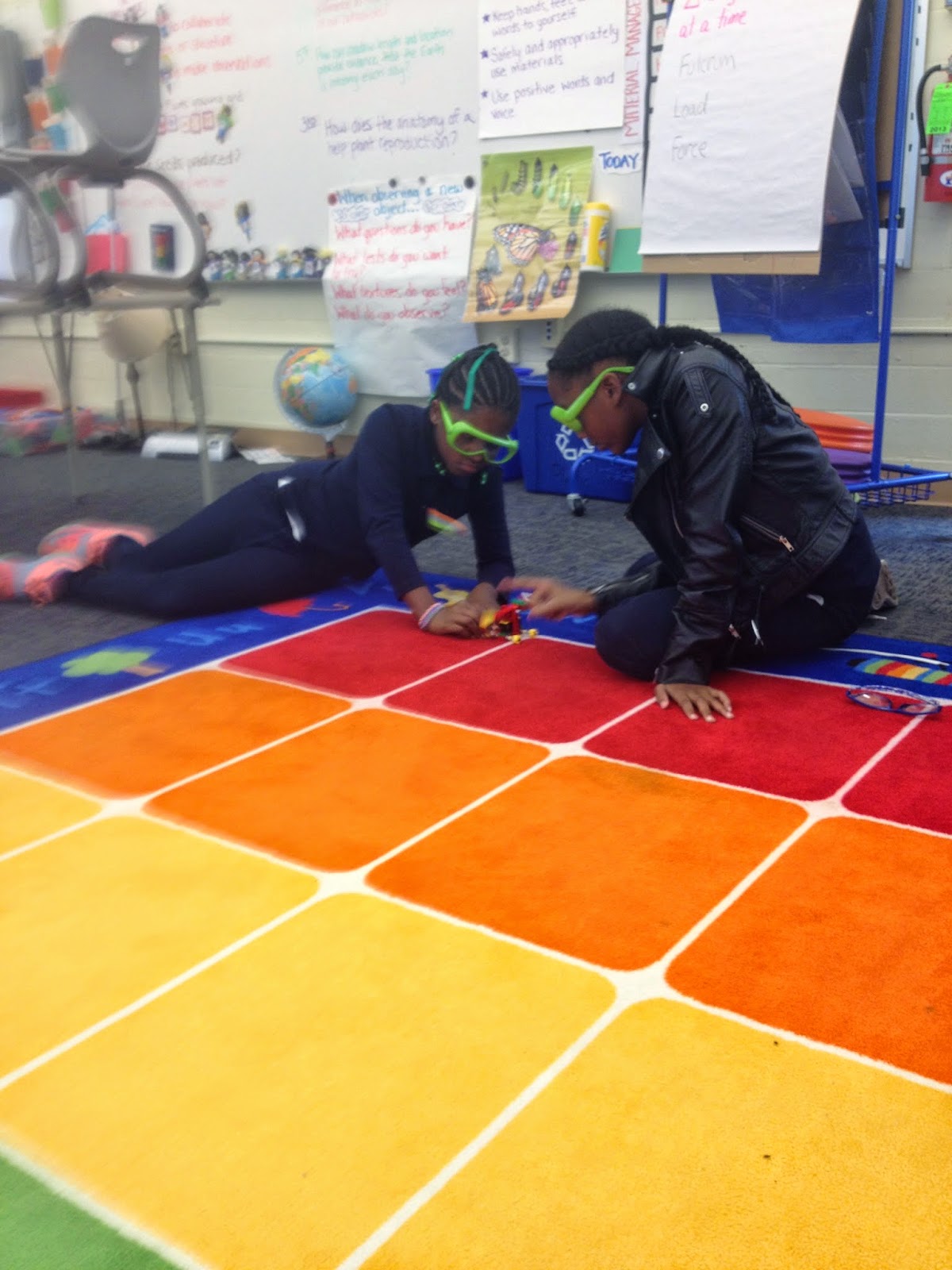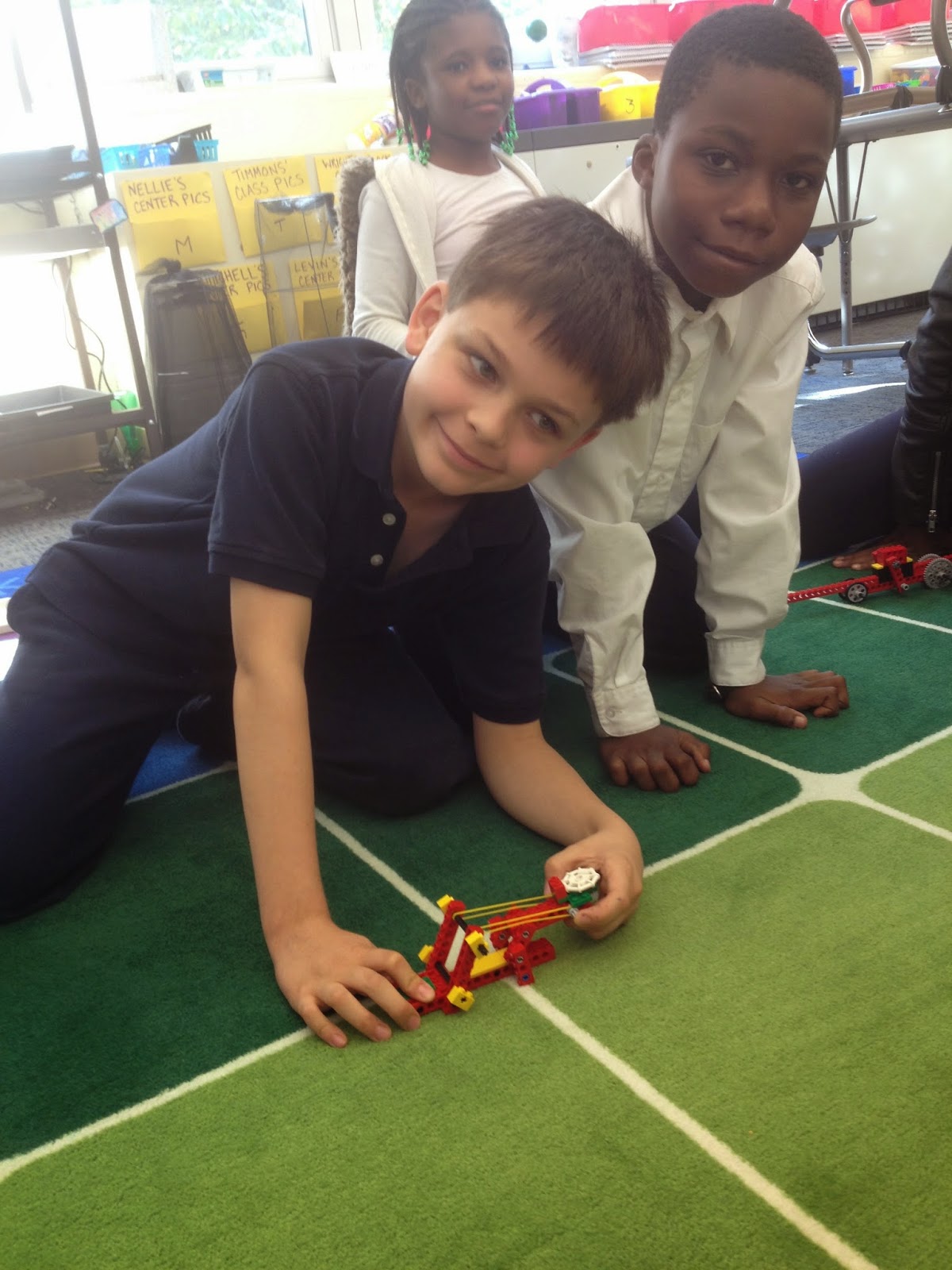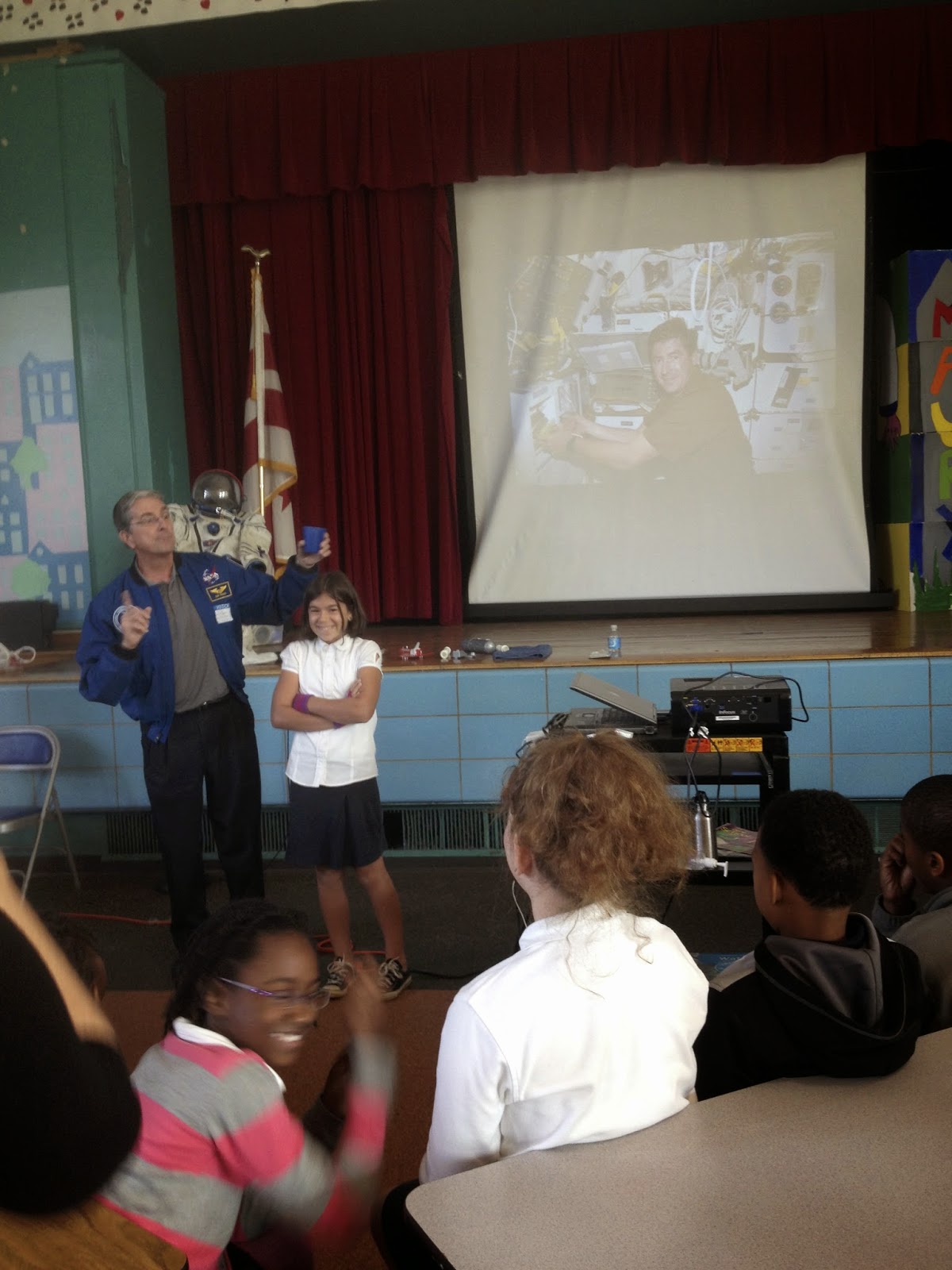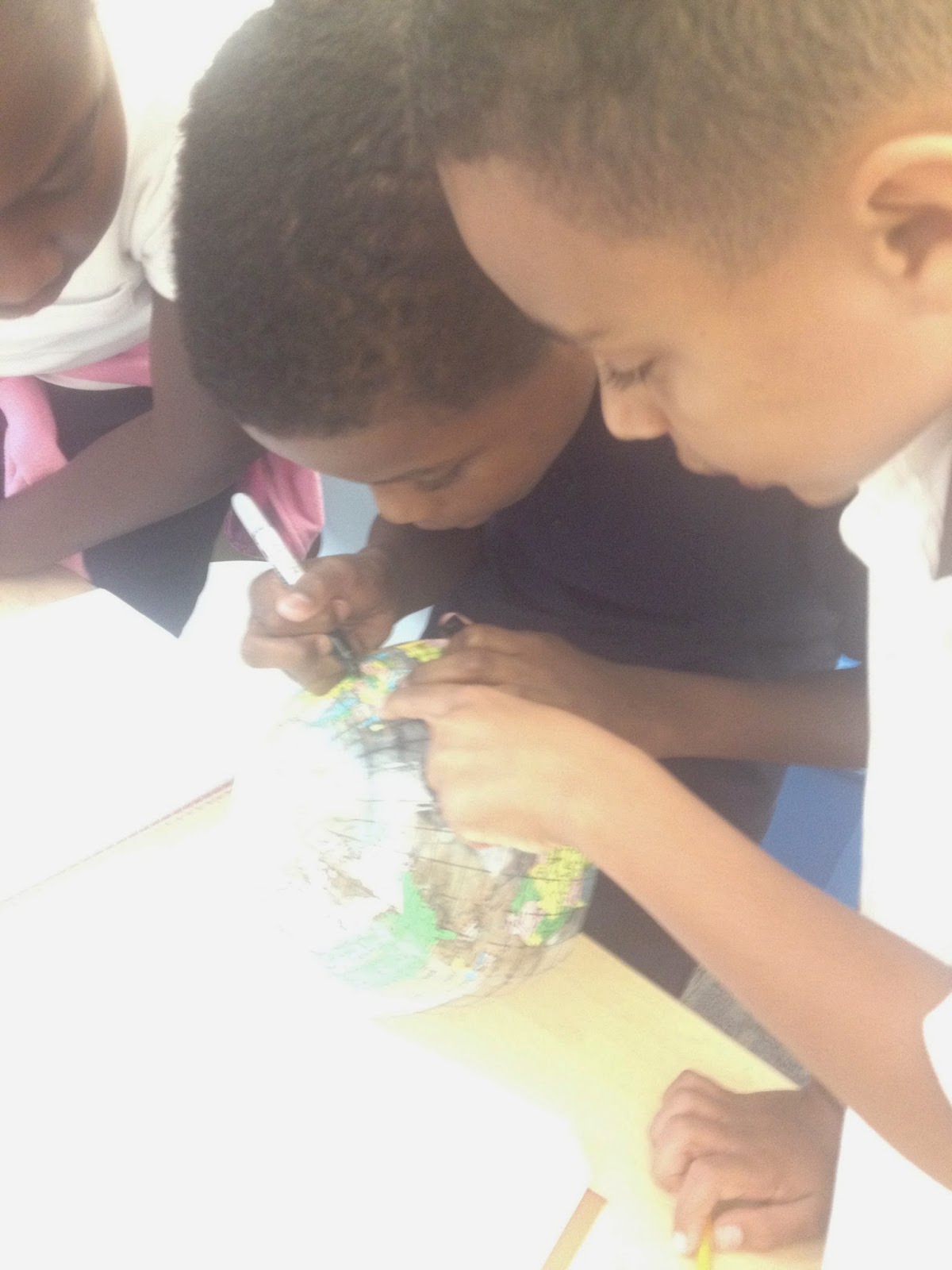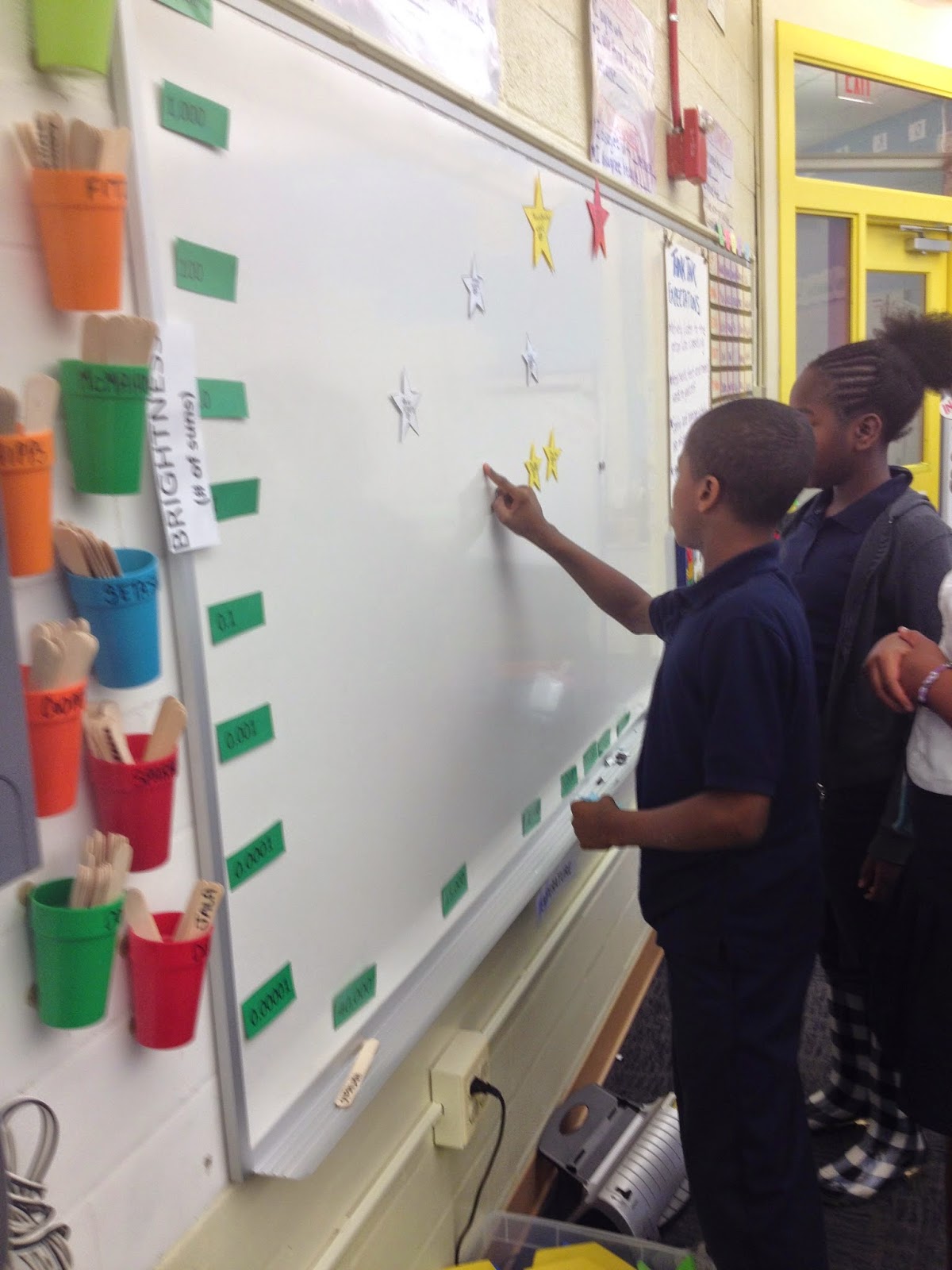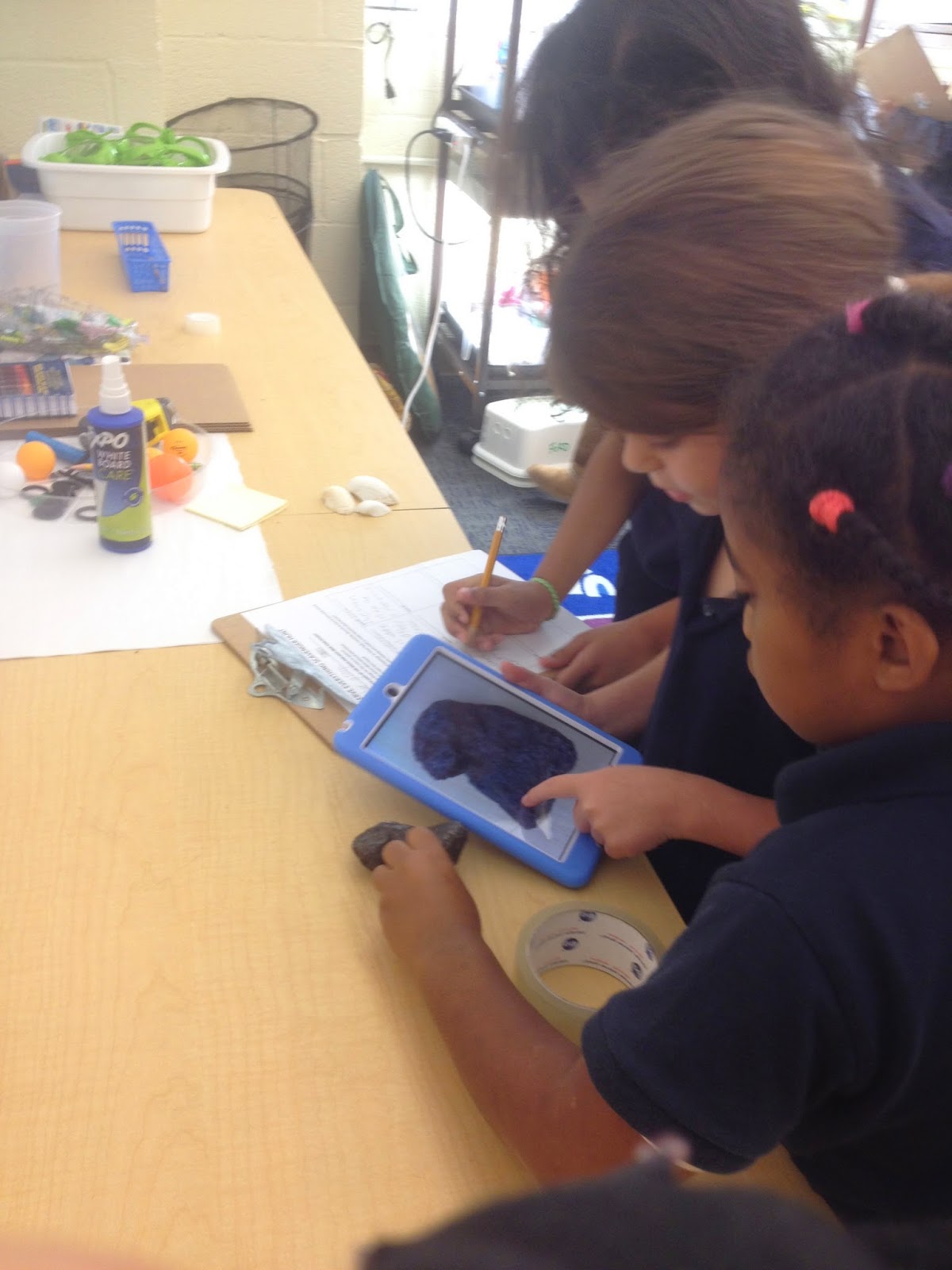 |
| 2nd graders complete an #ObserveEverything challenge. |
This month’s work was inspired by one of my favorite programs on National Public Radio– Science Friday. Science Friday has a Science Club online. For one month, they asked people to OBSERVE EVERYTHING… and Maury students did!
| Observing our newly emerged Monarch! |
My goal was to provide a context for students to work together to observe phenomena and draw conclusions based on their observations. I also wanted to make the data derived from these observations as REAL as possible, to have students not only observe but live the thing they were observing. For example, who wants to use a print out of last year’s weather data when you can live the data anyway? Who wants to watch a time-lapse of food decomposing when you can live it happening each week?
Lucy explains her observations about decomposing foods.
At all levels, students have been honing their observation skills! More importantly, they have used their observational findings and applied them to finding patterns, analyzing data, asking questions and working together to find solutions to problems! Each grade level has been involved in different projects so here are a few highlights.
Kindergarten, 1st and 2nd Grades:
With the Next Generation Science Standards, K-2 are expected to understand are that scienti
sts use different ways to study the world, look for patterns when making observations, and use drawings, sketches and models to communicate their findings. In Think Tank, students have had the chance to practice these scientific skills in various ways.
In addition to our weekly class, students are tracking daily weather conditions. They made predictions about what kind of month we would have and we are watching closely to see if our predictions were correct
1st GRADE OBSERVERS:
1st grade students have continued observing changes in their Wisconsin Fast Plants over time but have also started a classic Habit of Mind Think Tank Challenge: Contribute Positively to the Group and Inspire Teamwork to create a single structure. This is harder than it seems, but our 1st graders are up to the challenge.
They are practicing using positive words and voice to communicate their ideas and resolve conflicts surround design through discussion. Each week they improve. While they work, I pull groups to meet and do close observation of our plants so it’s the best of both worlds: practicing the PRACTICE of problem solving in a group and working on a scientific phenomena in a small group.
2nd GRADE OBSERVERS:
As noted in my last post, this group has spent a lot of time looking very closely at their work and the PROCESS of that work. Last week they completed an #ObserveEverything Scavenger hunt. We were supposed to go outside to explore our schoolyard ecosystem but it was raining…again! Not a problem though, students were asked to look past the obvious in the classroom and OBSERVE EVERYTHING!
While Ms. Toni was away last week we finally had a chance to delve into our weather wall. We have been recording air temperature at the same time every week since the 1st week of school. Students looked for temperature trends and then used those observations to make predictions for what the temperature will be like in 5 weeks!
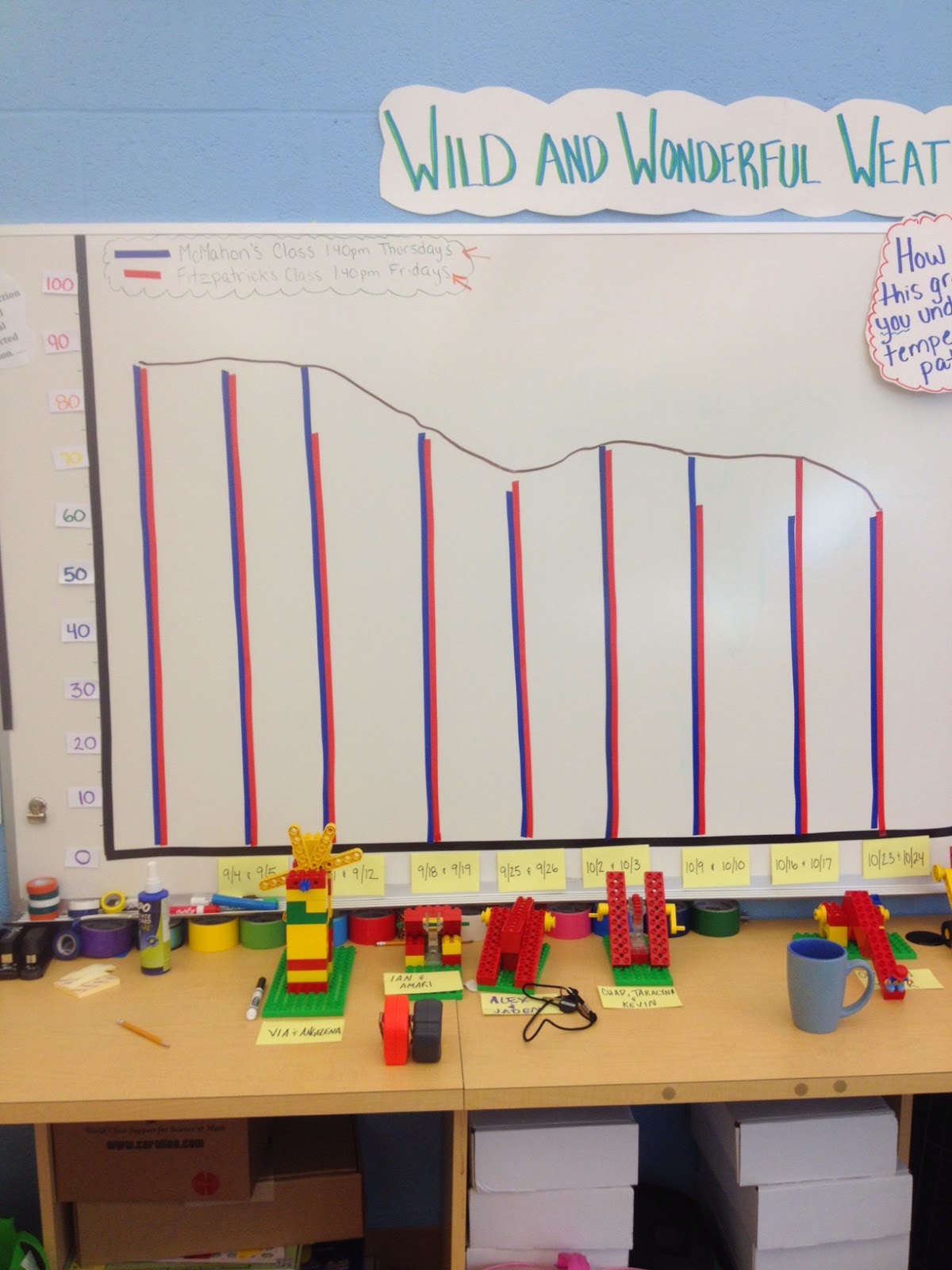 |
|||
| Our data since the first week of school. Two classes = two data points! |
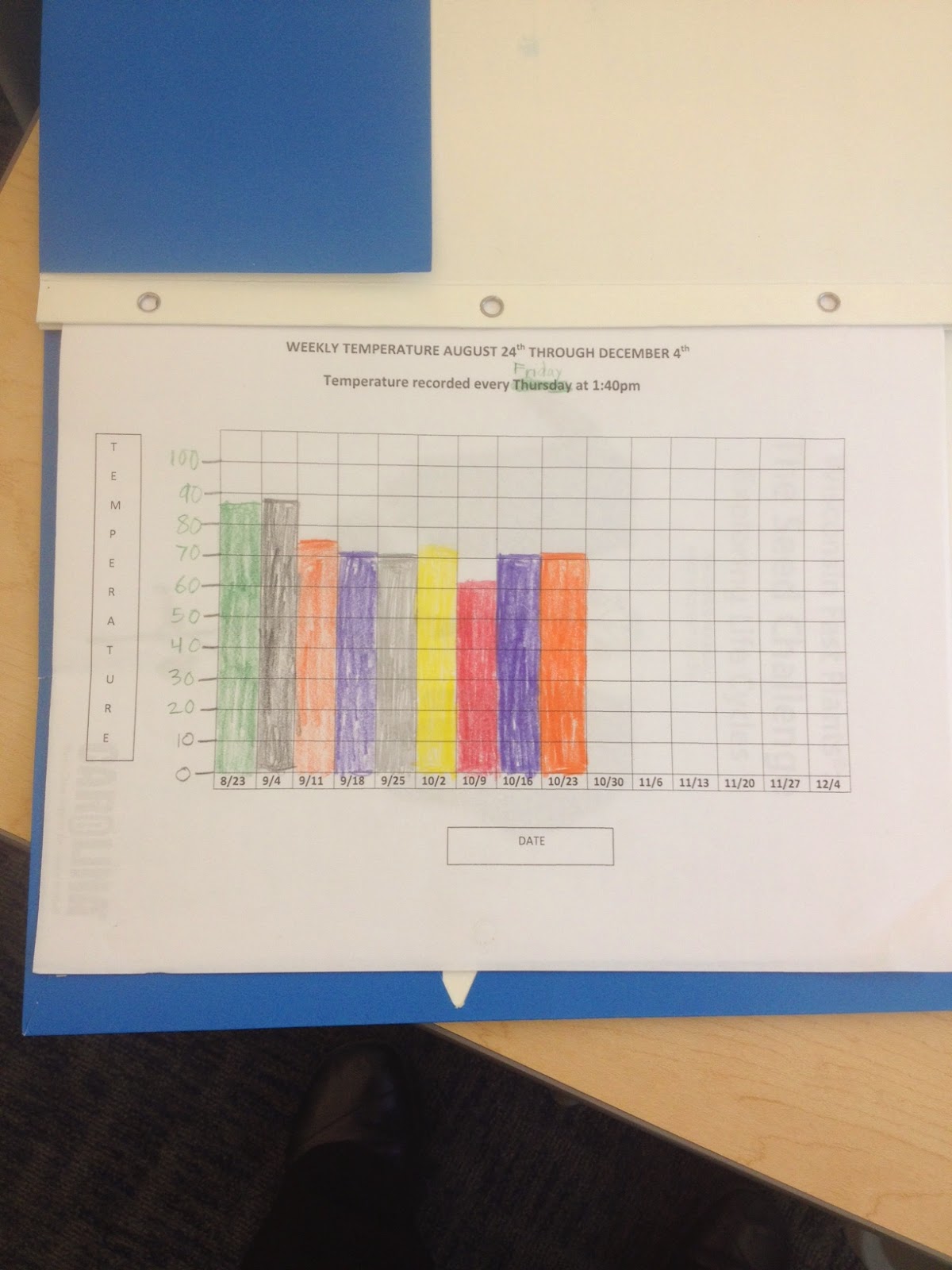 |
| Student journal since week one. |
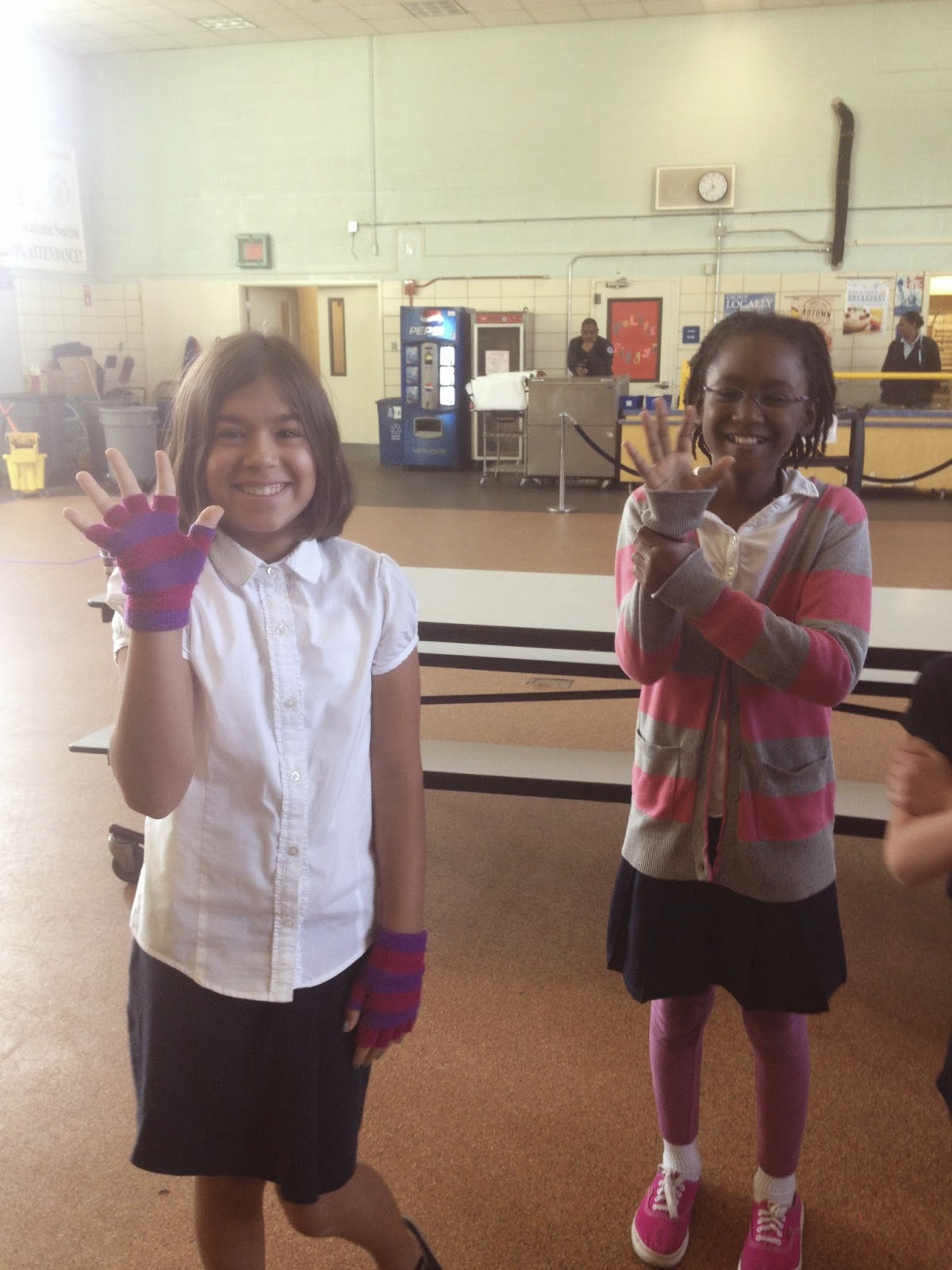 |
| “We are never washing our hands again! They shook the hand of an astronaut!: |
This visit really helped students add context to what we are studying in class too. They are finishing up an exciting Space Systems unit. In this unit they have explored the phenomena of day and night by traveling the globe using EarthCam.
FINALLY…..
 |
| In the quietest place I could find for the interview… my car! Waiting for the call! |








